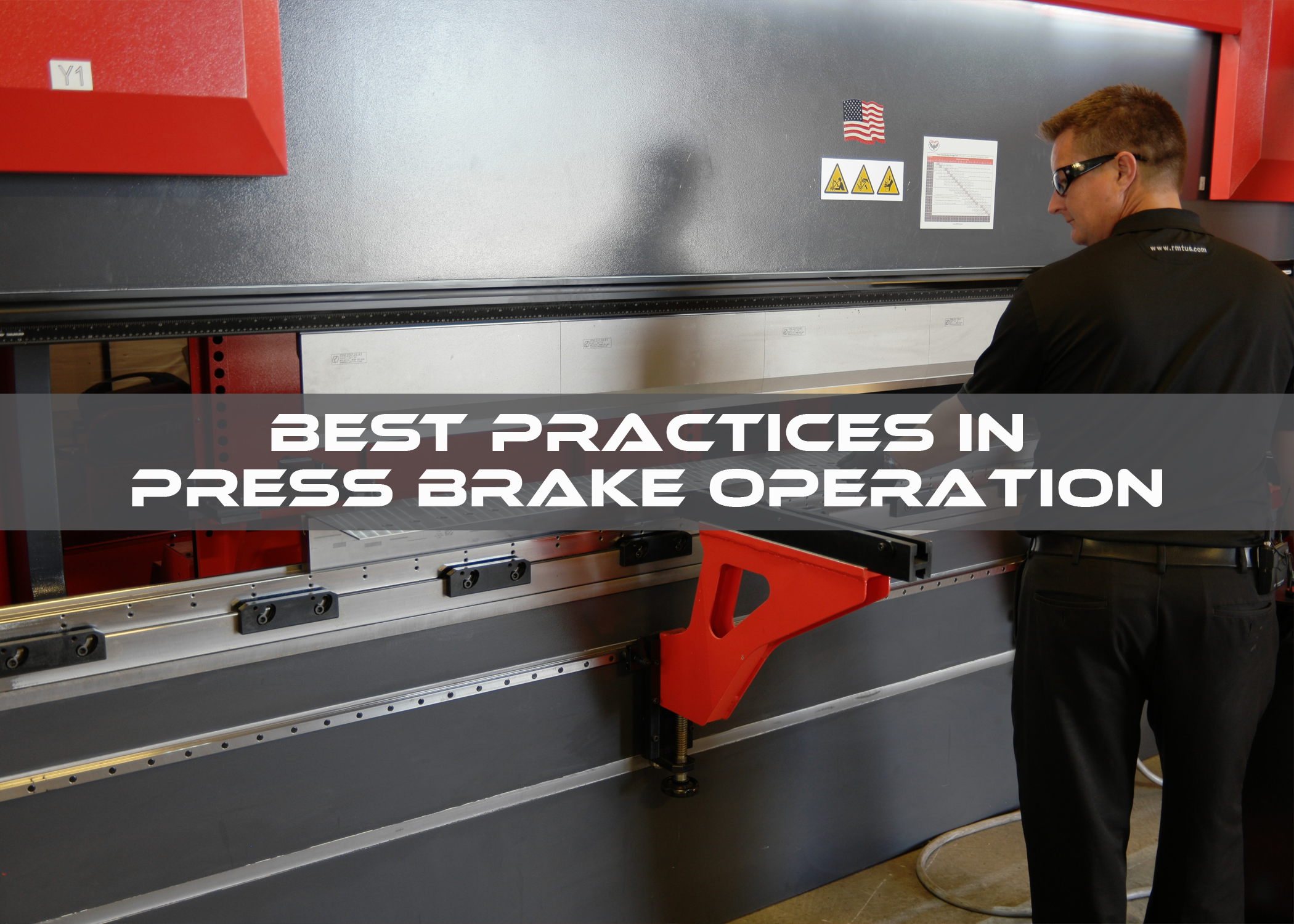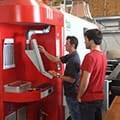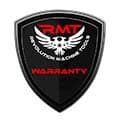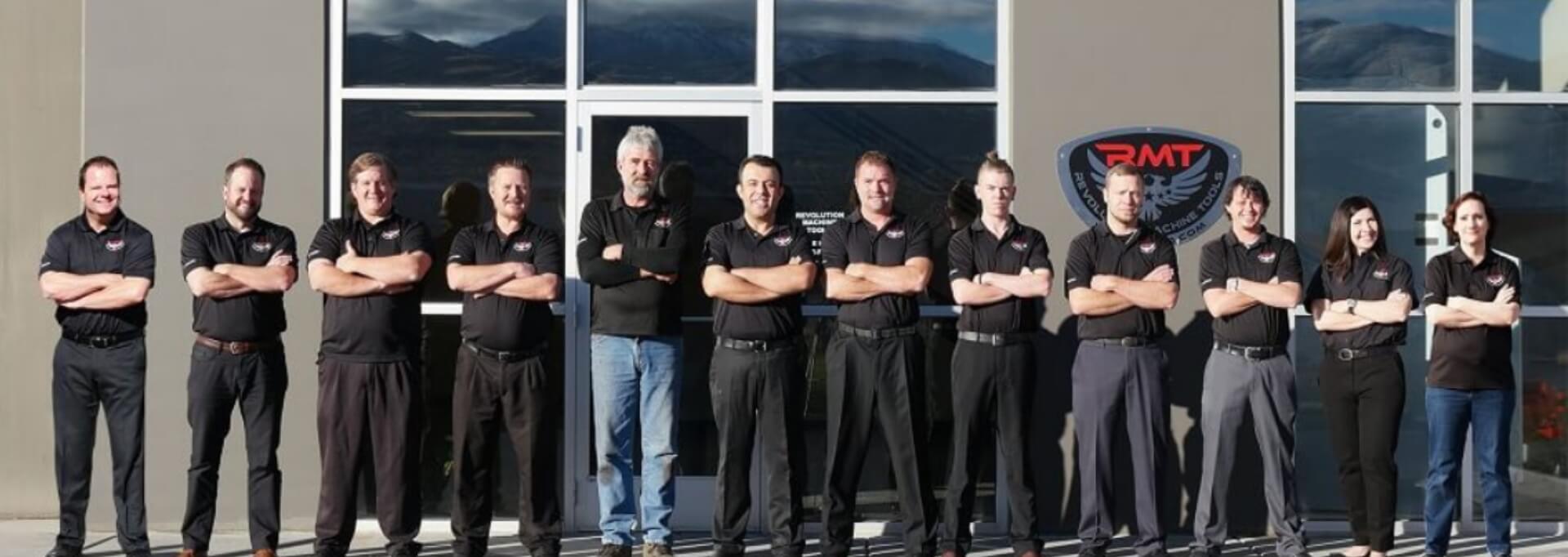Press brakes are essential tools in metal fabrication, used for bending and forming sheet metal into precise shapes. However, their operation requires skill, precision, and adherence to safety standards to ensure efficiency and quality. Implementing best practices in press brake operation enhances productivity, minimizes material waste, and ensures operator safety.
Operator Training
One of the most critical aspects of press brake operation is proper training. Operators must be well-versed in machine functionality, including understanding press brake components such as the ram, die, and back gauge. They should have knowledge of different metals, their bending tolerances, and spring-back effects. Additionally, reading blueprints is crucial to ensure correct bends and tolerances, while safety protocols, including OSHA and company-specific guidelines, help prevent workplace injuries. Employers should provide hands-on training and encourage operators to acquire certifications, such as those offered by the Fabricators & Manufacturers Association (FMA). A continuous learning approach ensures operators remain up to date with new techniques and safety improvements.
Maintenance
Regular maintenance ensures the longevity and accuracy of press brakes. A preventative maintenance schedule should include daily inspections to check for leaks, loose fasteners, and worn-out parts. Lubrication of all moving parts helps reduce wear and tear, while regular calibration of the machine maintains accuracy in bends. Keeping control software up to date optimizes performance and security. Additionally, periodic deep inspections should be conducted to identify potential issues before they become major problems. By adhering to a maintenance schedule, operators can prevent unexpected downtimes and costly repairs.
Tooling
Choosing the right punch and die is crucial for achieving precise bends. Factors to consider include material type and thickness, ensuring different metals have specific tool types and angles. The correct die width and punch tip must be used to achieve the desired bend radius, and appropriate die clearance should be maintained to avoid excessive force or material cracking. Proper setup also involves securely fastening the tooling and ensuring alignment to prevent misalignment-related errors. Different materials require different levels of tonnage and force, so it is crucial to adjust press brake settings accordingly to achieve the best results. Improper tool selection can lead to material damage, increased waste, and rework, affecting overall productivity.
Workpiece Positioning
Accurate workpiece positioning is vital for repeatability and precision. Utilizing back gauges correctly ensures consistent bending locations, while clamping and fixturing prevent sagging, particularly for large sheets. Marking the workpiece for visual alignment assistance further enhances accuracy. Operators should also double-check positioning before making bends to prevent errors and ensure uniform results. Implementing laser-guided positioning systems can also aid in improving accuracy and repeatability, particularly in high-precision industries such as aerospace and automotive manufacturing.
Safety
Press brake operations can be hazardous if safety protocols are not followed. Key safety measures include the use of light curtains and safety guards to prevent hand and finger injuries, as well as ensuring all operators know the location and function of emergency stop mechanisms. Wearing personal protective equipment (PPE) such as safety glasses, gloves, and steel-toe boots is essential. Ergonomic considerations, such as adjusting workstations, help reduce strain and fatigue for operators. Proper training in handling and lifting heavy materials also plays a significant role in preventing musculoskeletal injuries. Implementing clear communication and signage around press brake stations can remind operators of essential safety precautions and procedures.
Bending Techniques
Achieving precise bends requires understanding different bending techniques, including air bending, which uses less force to allow material spring-back and provides flexibility in angle adjustments. Bottoming involves pressing the material firmly into the die to achieve high accuracy with minimal spring-back. Coining applies extreme force to create highly accurate and consistent bends with virtually no spring-back. Operators should be aware of the advantages and limitations of each bending method and select the most appropriate one for the task at hand. Understanding the effects of grain direction on bending can also help in achieving more accurate results and preventing cracking or warping of the material.
Material Usage
Optimizing material usage helps reduce costs and waste. Pre-production testing by running test bends on scrap pieces before full production ensures accuracy. Optimized nesting arranges parts efficiently on the sheet to minimize waste. Conducting quality control checks at various production stages helps catch errors early. Additionally, maintaining proper inventory control and tracking material usage helps in reducing excess scrap and making the most out of available resources. Utilizing software for material planning and nesting can further enhance efficiency and cost-effectiveness.
Advanced Technology
Modern press brakes come equipped with advanced features that improve efficiency. CNC controls automate bend sequences for precise and repeatable results. Angle measurement systems use real-time angle correction to minimize errors. Robotic press brakes automate handling and bending for high-volume production. Integrating these technologies helps increase productivity while maintaining consistency. The use of artificial intelligence and machine learning in press brake operations is also an emerging trend, offering predictive analytics and real-time monitoring to further enhance efficiency and reduce errors.
Prioritize Best Practices
By implementing best practices in press brake operation, manufacturers and other metalworking facilities can ensure a competitive edge in the metal fabrication industry. Companies that prioritize best practices will benefit from increased productivity, reduced costs, and higher-quality output, ultimately leading to greater customer satisfaction and business success.
